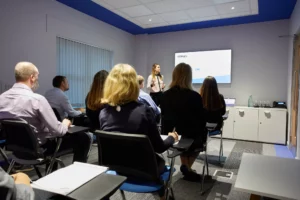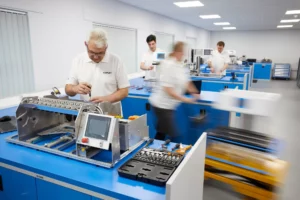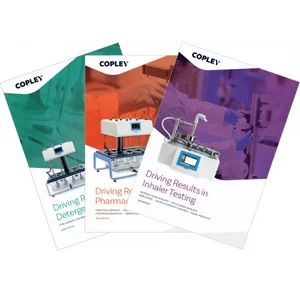A Q&A with Jamie Clayton and Imran Haneef on how the trusted BEP2 Powder Flowability Tester was re-engineered for current needs and markets.
Why does Copley offer a powder tester? And what made you decide it was time to update it?
Jamie Clayton: At Copley our focus has always been on supporting the analytical needs of the pharmaceutical industry, a sector which relies heavily on the efficient handling and processing of powders. Powder flowability testing has long been a compendial specification, making the development of dedicated test solutions a natural fit for us.
The Jolting Volumeter for tapped density measurements, forerunner of today’s JVi series, was our first offering. The BEP followed soon after with classic tests including Angle of Repose and Flow Through an Orifice. That said, powder flowability is a critical factor across numerous industries, and many of our customers in this area operate outside of pharma.
Imran Haneef: The BEP2 has been a reliable workhorse for nearly 15 years, but technology doesn’t stand still. Advances in materials, manufacturing and automation offer opportunities for improvement.
We wanted to make the tester easier to use, more flexible and better connected – modern ergonomics, streamlined method switching, and greater scope for automation.
Are there any market trends that influenced the design?
IH: Despite the original motivation this has always been a product with appeal beyond the pharmaceutical industry. For instance, our customers test food products, detergents and bulk chemicals, while feedstocks for additive manufacturing/3D printing and battery manufacturing are a growing part of the mix. The tests we offer, from flowability to bulk density, are mostly used for QA and QC and can help companies to establish credibility and stand out in crowded markets.
JC: Agreed. These are established, universal powder testing methods, notably angle of repose. Within the context of global supply chains, they engender confidence, enabling anyone to quickly check a defining characteristic of powders – flowability. But reproducibility can be a challenge. We wanted to offer a reliable and robust solution, accessible to everyone.
Sustainability also guides what we do. Every product update is an opportunity to improve in this area, with reduced material usage and lower shipping weight key gains for this tester. We’ve also switched to a fully recyclable packaging solution.
How do you approach new product development?
IH and JC: We always start with the voice of the customer.
JC: In other words, a detailed understanding of what customers need from a powder tester and the workflows associated with use. Just because we can engineer a feature doesn’t mean we necessarily should; there’s a risk of over complication and excessive cost. Our goal is a tester that robustly meets customer requirements, as elegantly and efficiently as possible.
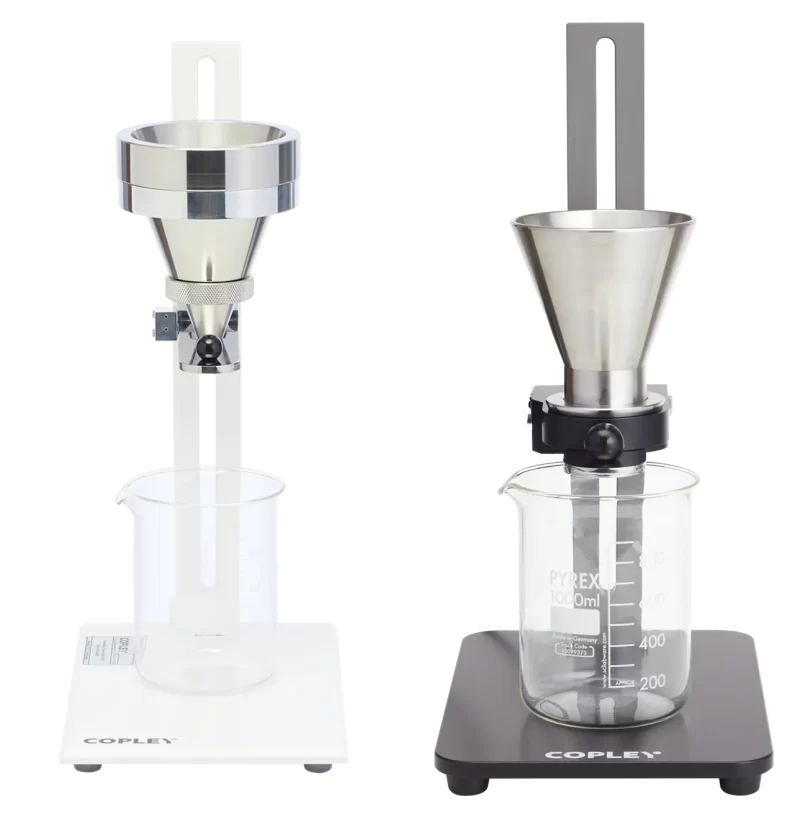
The BEP2 with Funnel Attachment (left) and the new Powder Testing Workstation PTW with Funnel Attachment (right)
What were the key deliverables for the new Powder Testing Workstation (PTW) and why?
IH: We had 15 years of feedback to build on. No features were routinely criticised, but some specifics were to reduce the weight of the funnel and to improve the robustness of the glass baffles in the Scott Volumeter. More generally, the goal was an easier to handle, lighter weight tester. The other area of focus was boosting automation and connectivity to improve reproducibility and productivity.
JC: Core functionality was not an issue; test methods haven’t changed. This update was all about using our skill and expertise to deliver established methods in an accessible and optimised format for modern labs. The goal was a flexible product that would allow a ‘pick and mix’ approach for customers, the ability to develop a workstation with the exact methods required without unnecessary extras.
Are design and manufacturing undertaken in-house?
JC: Design is in-house. We have a dedicated team that draws in expertise from every part of the company including business development, application support and engineering. We’re a diverse bunch in terms of core competencies but attention to detail is a shared characteristic. Many years of working in the highly regulated pharmaceutical industry has instilled a high level of rigour. That is why customers trust our instruments.
For certain manufacturing elements, we work with specialist suppliers in the East Midlands and across the UK. These collaborations are crucial for both sustainability and quality. Seeing a prototype come to life with our suppliers is always an exciting milestone.
What are your favourite features of the new powder tester?
IH: The Powder Testing Assistant (PTA 100i). There’s nothing else like it on the market, and it transforms the customer experience.
Together with the Powder Testing Workstation, the PTA 100i allows customers to build a plug and play workbench with all the powder testing methods in one place. It integrates timing, weight capture, guided workflows and reporting, and makes the new solution so user friendly. By supporting logical workflows, it leads everyone to good quality data, however unfamiliar they are with powder testing, which is especially valuable for training new users or supporting academic labs.
JC: I’m with Imran on that one. The PTA 100i is the hub of a complete user-friendly solution for powder testing. We’ve packed the full suite of powder testing methods into a space saving design that won’t dominate your bench and is efficient to use.
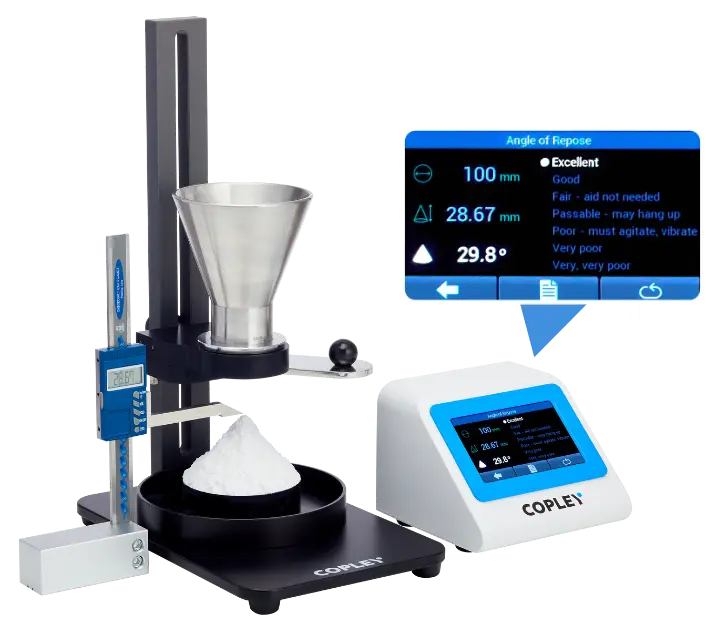
The Powder Testing Workstation PTW with Angle of Repose Module and Powder Testing Assistant PTA 100i
What’s the best and hardest part about launching?
JC: A launch is undoubtedly demanding. We hold ourselves to high standards and have an enviable reputation to maintain so everything needs to be right. That pressure is real! There are many elements to bring together as release day approaches, from ensuring we can meet new orders from the outset to getting the word out.
But the pressure is balanced by the excitement of seeing customers respond positively to something we have worked so hard on.
IH: For me, the highlight comes a little later, when I see those first units up and running in customer labs. Being able to offer researchers better tools to advance the work they’re doing makes all the effort worthwhile.
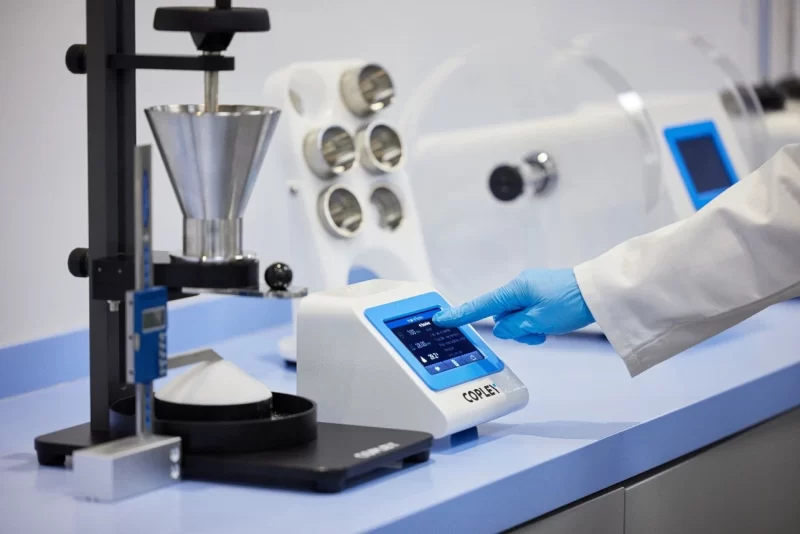
Powder testing is a small but critical part of ensuring product quality across industries. By introducing the Powder Testing Workstation (PTW), Copley has combined trusted, standardised methods with modern usability, automation and sustainability.
For pharmaceutical labs, or any organisation working with powders, the new PTW and PTA 100i offer a flexible, reliable and future ready solution.
Copley’s complete powder testing range offers solutions for tapped density, angle of repose, bulk density and flow through an orifice measurements, including a dedicated solution for metal powders. There’s something for everyone, however you work with powders.
Final Thoughts
Make sure you subscribe to our blog for regular updates on powder testing techniques and equipment straight to your inbox.


